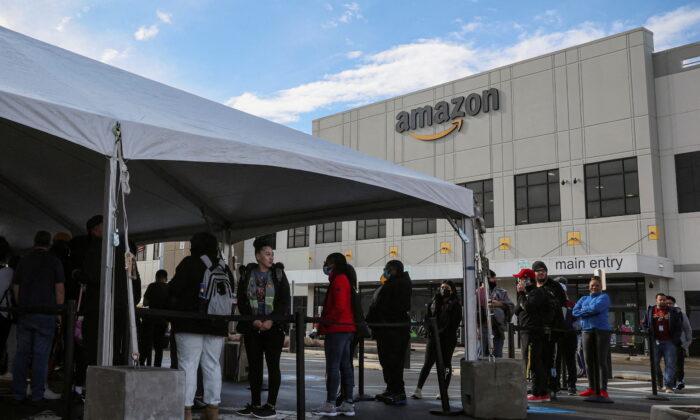Labor board officials expect to start counting votes by Amazon.com Inc. warehouse workers in New York City and Alabama on Thursday afternoon in separate contests that will decide if Amazon sees a U.S. workplace unionize for the first time.
In Bessemer, Alabama, Amazon employees voted in a repeat election after they rebuffed joining the Retail, Wholesale and Department Store Union (RWDSU) by a more than 2-to-1 margin last year. After finding that Amazon had interfered around that vote, the National Labor Relations Board (NLRB) called for a re-run.
Turnout in Alabama decreased from last year, the RWDSU said on Wednesday. About 39 percent of the 6,143 workers designated to receive mail ballots voted in the new election, down from over 50 percent in 2021.
In New York City’s Staten Island borough workers on Wednesday still had several hours left to vote, and turnout was not yet clear.
The counts for both Bessemer and Staten Island are tentatively scheduled to begin at 1 p.m. Eastern Time Thursday, though that could change, an NLRB spokesperson said. Counting could last multiple days.
Low turnout may bode well for Amazon’s union backers, said John Logan, a labor professor at San Francisco State University.
“Supporters are more likely to be solid union votes,” he said, adding, however, that it was tough to generalize. “Even a close election is going to be in some ways a sort of a morale booster and moral victory for the RWDSU.”
Amazon referred comment on the vote count and turnout to the NLRB.
According to the RWDSU, parties in the Bessemer election have challenged hundreds of ballots as ineligible for counting, based, for instance, on voters’ employment dates, job classification, or other issues.
Those challenges will be addressed after the remaining ballots are counted and could alter the outcome in the event of a close election.





